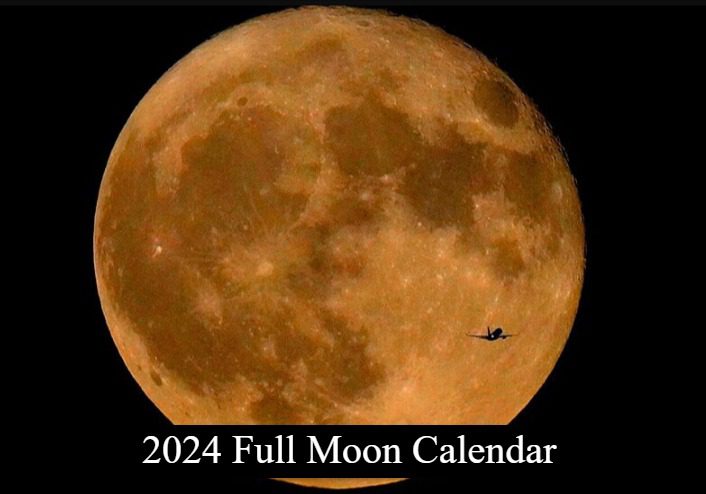Our closest celestial neighbor has long captured human imagination, acting as both beacon in the night sky and cultural symbol. Looking towards 2024, lunar calendar offers us many enchanting full moons – each one holding special meaning – which this guide explores further by noting when these magical nights will happen and giving an overview of both lore and science behind each of them.
The Rhythmic Dance of Lunar Phases
- The Lunar Cycle Unveiled: The moon’s journey through its phases is an exquisite celestial ballet, marked by distinct lunar phases. A pinnacle in this cycle occurs during full moon when Earth lies directly between sun and moon allowing their surfaces to be illuminated equally – creating the brilliant orb seen so often at night time.
- A Glimpse into the Moon’s Mystique: Although its presence may seem mundane, the full moon never fails to inspire. From its crescent to full glowing orb phases, its perpetual beauty serves as an indicator of time passing and seasons changing; every full moon phase serves as a reminder of this eternal entity watching over our lives here on Earth.
2024 Full Moon Calendar Unfolded
Mark your calendars and dust off your telescopes – 2024 is set to bring an abundance of full moon spectacles! Each month features its own lunar event named according to ancient traditions that reflect its characteristics at that particular time of year. Here is the timeline and list of full moon events of 2024:
- January 25: Wolf Moon
- February 24: Snow Moon
- March 25: Worm Moon
- April 23: Pink Moon
- May 23: Flower Moon
- June 21: Strawberry Moon
- July 21: Buck Moon
- August 19: Sturgeon Moon
- September 17: Harvest Moon
- October 17: Hunter’s Moon
- November 15: Beaver Moon
- December 15: Cold Moon
These names, steeped in history and folklore, offer a glimpse into how our ancestors related to the moon and its cycle, linking it to their agricultural practices, hunting routines, and natural phenomena.
Celebrating the Names of the Moon
- A Tapestry of Traditions and Nature: Naming full moons has long been an ancient practice, each name reflecting cultural or natural events of that month’s moon – for instance, “Wolf Moon” refers to winter’s howling wolves while Harvest Moon marks harvest season – these names serve not just as labels but as tales that show humanity living more harmoniously with nature’s cycles.
- The Moon’s Cultural Imprint: Beyond their practical implications, names of full moons serve as cultural touchpoints that link us back to the past and the many ways our ancestors found meaning in the night sky. Their symbolic importance reminds us that humans strive tirelessly to understand nature while finding significance within it all.
The Celestial Events of 2024: Eclipses
2024 is notable not only for its impressive string of full moons but also due to the striking lunar and solar eclipses it brings, serving as testaments of Earth, moon and sun interactions.
- Lunar Eclipses to Witness: Penumbral Lunar Eclipse on March 25 and the Partial Lunar Eclipse on September 17-18 should provide eye-catching views, displaying how Earth’s shadow can cast an irresistibly captivating pattern over the moon’s surface.
- Solar Spectacles in the Sky: Total Solar Eclipse on April 8 and Annular Solar Eclipse on October 2 are not-to-be-missed events, offering incredible moments as the moon casts its shadow over Earth.
Embracing the Lunar Lore
As we travel through 2024, the full moon calendar serves as our celestial guide, prompting us to stop and gaze upon its magnificent nights sky. Each full moon has a story and tradition associated with it that deepens our understanding of nature and ourselves in it; be it seen through telescope, camera or naked eye viewing experience them will take us on an journey across time, culture and the cosmos itself! Let’s cherish these luminous nights and their universal allure of lunar companion.





